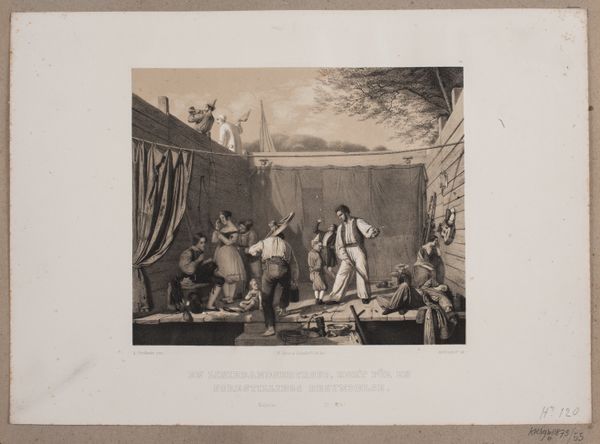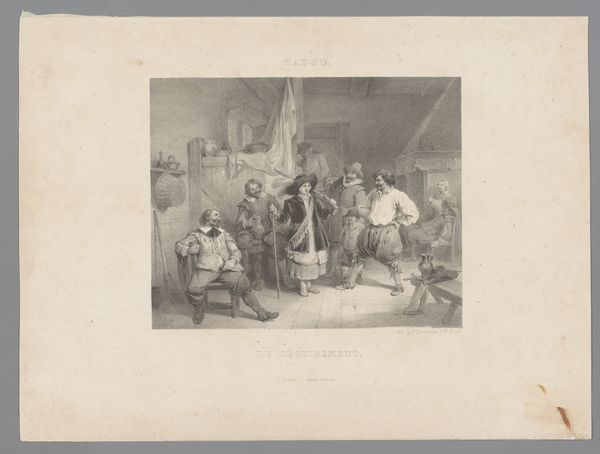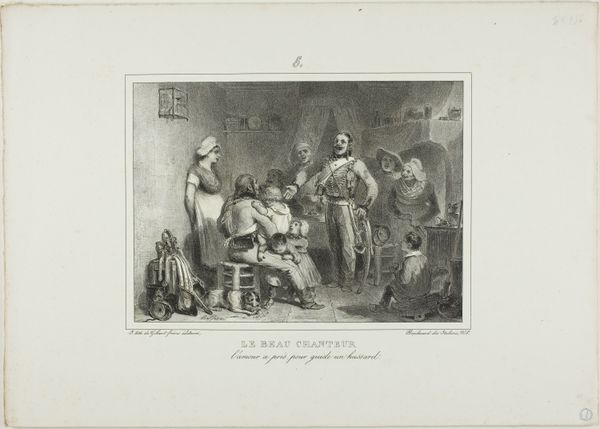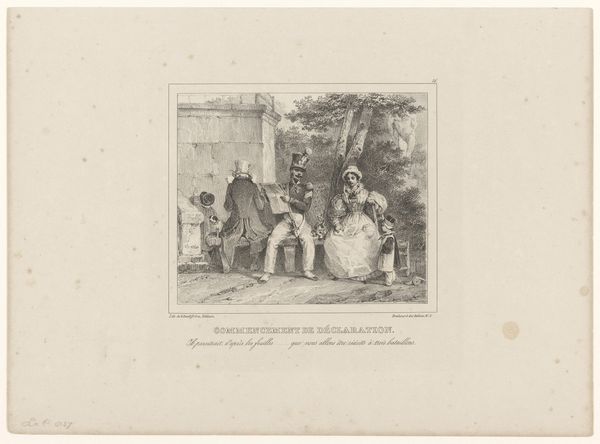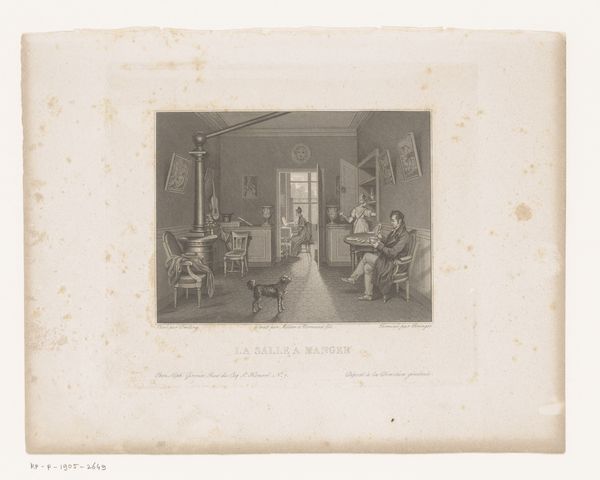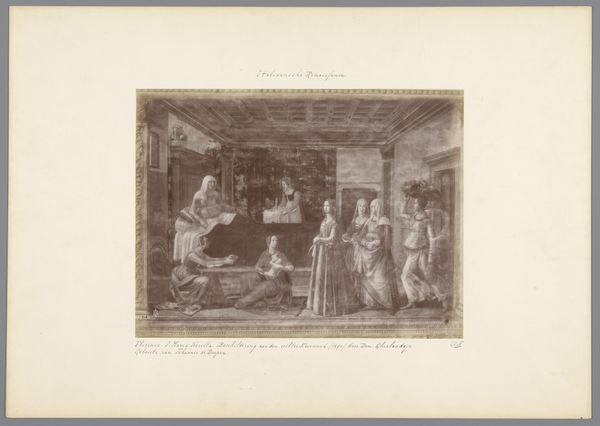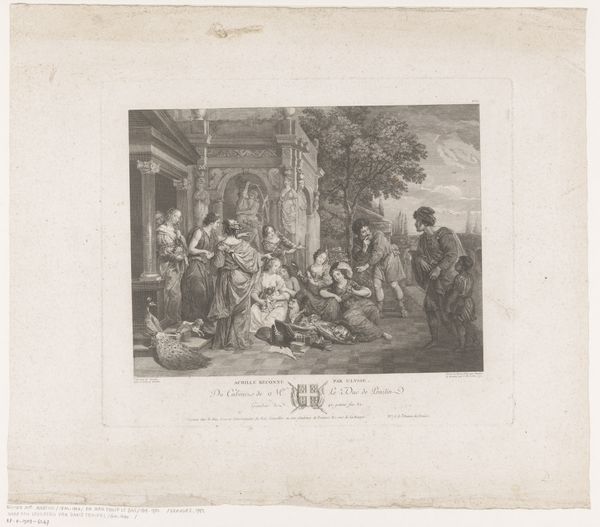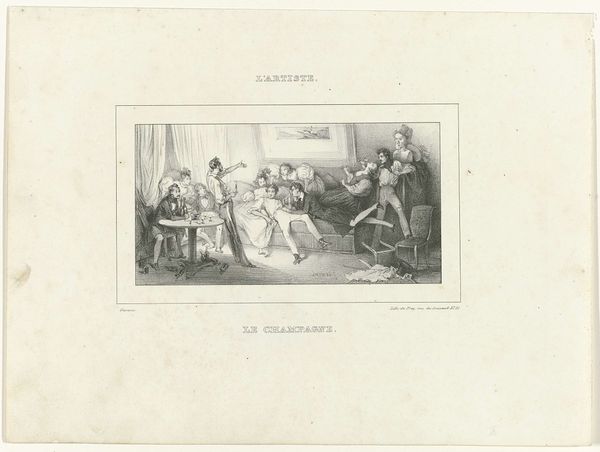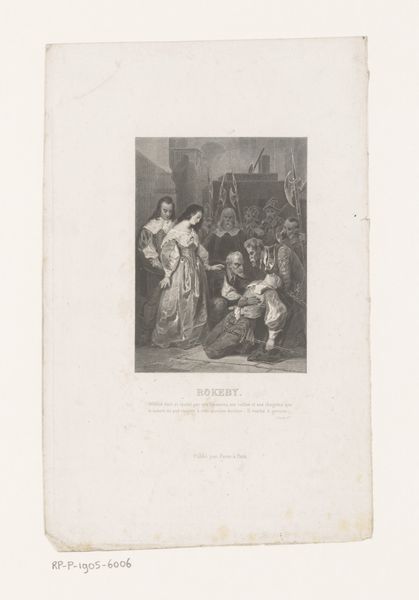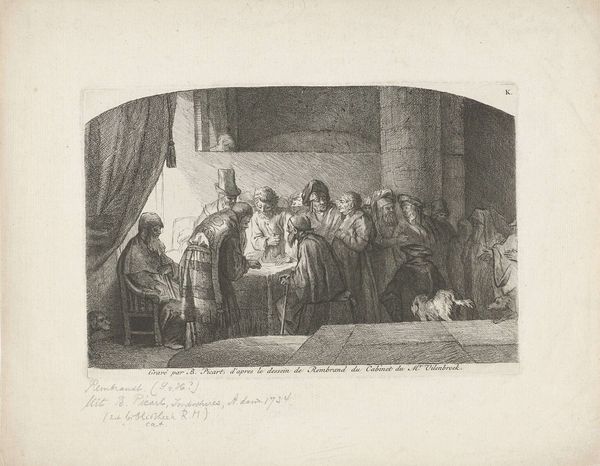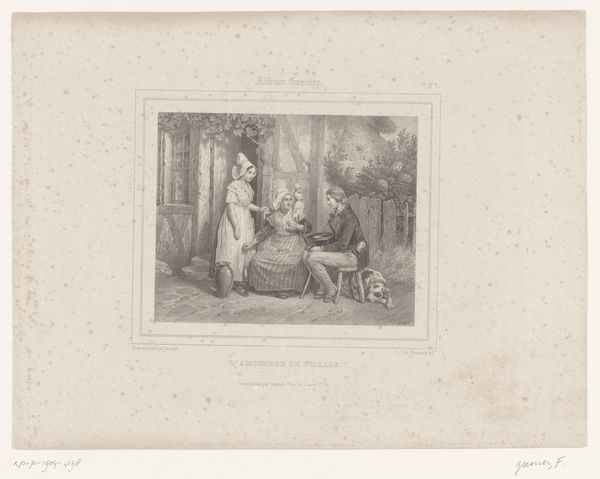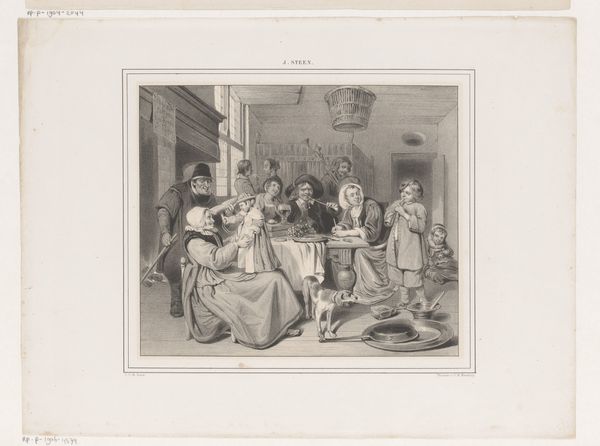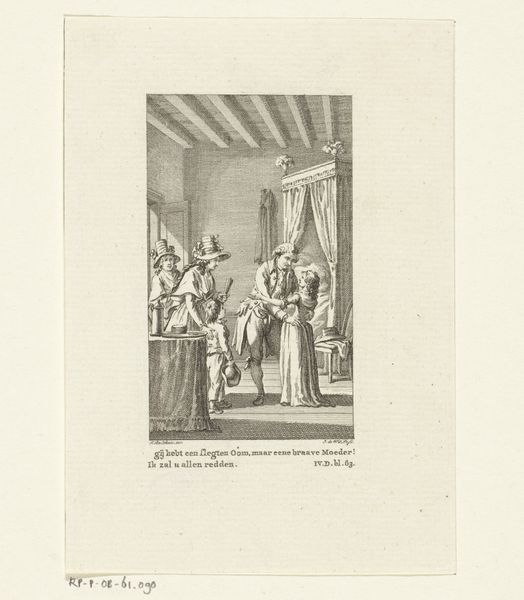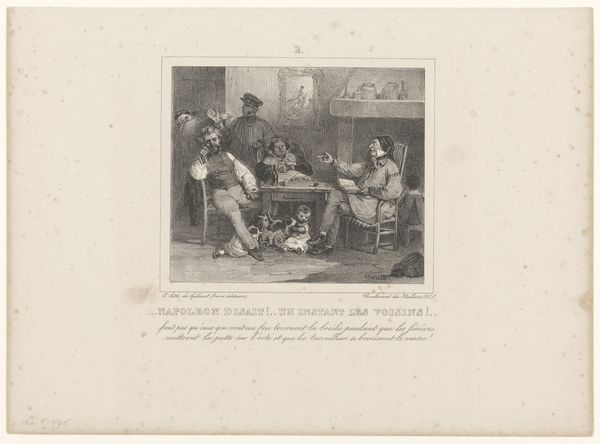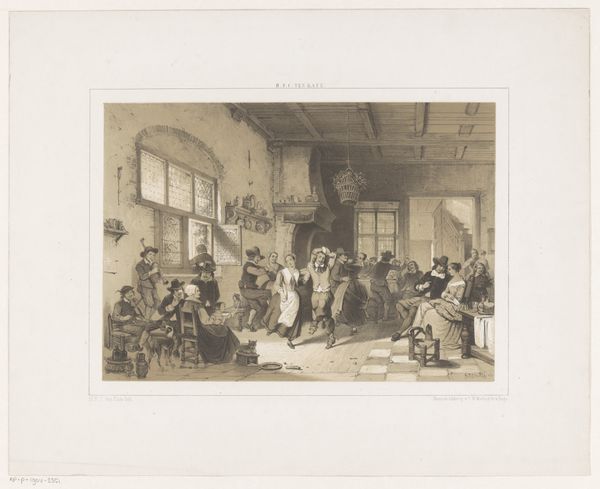
Fotoreproductie van een prent naar het schilderij Interieur met een vrouw, die een papegaai voert, twee triktrakspelers en andere figuren, bekend als 'De papegaaiekooi' door Jan Steen c. 1865 - 1875
0:00
0:00
print, engraving
#
narrative-art
#
dutch-golden-age
# print
#
old engraving style
#
figuration
#
genre-painting
#
engraving
Dimensions: height 72 mm, width 57 mm
Copyright: Rijks Museum: Open Domain
Curator: Our attention is drawn to a later print reproduction of Jan Steen’s painting "Interior with a Woman Feeding a Parrot, Two Tric-Trac Players and Other Figures," more commonly known as "The Parrot Cage", dating from around 1865 to 1875. It’s an engraving rendered in the style of the Dutch Golden Age. Editor: It immediately strikes me as chaotic yet charming. The composition, while clearly structured, feels bursting with activity and everyday drama. The light and dark contrast directs my eye. Curator: The narrative scene offers insight into Dutch domestic life during the 17th century. Steen was renowned for depicting relatable, often humorous, situations within middle-class households, frequently imbuing them with moral undertones. Note, the "tric-trac" game suggests leisure, perhaps excess. Editor: Excess, indeed! Look at the overturned stool, the child fiddling with scraps on the floor, and then the elevated parrot in the cage...a visual hierarchy seems present. I observe a subtle tension created by placing the dark background elements against brighter foreground figures; the lines generate a contained disarray. Curator: You point out the contrasts, the light and shadow not only emphasize forms, but create a setting that reinforces prevailing societal norms; gendered spaces—domestic work and familial concerns presented on the one hand versus leisurely games played by men, set further back in the scene. Editor: A sense of depth definitely resonates; the layers are more than physical arrangement. Each glance into the artwork suggests narrative levels I have yet to decode. It moves past the surface level of mere illustration and presents an investigation of form and meaning intertwined within societal constraints. Curator: I concur. Viewing this photographic reproduction helps us further examine 19th-century interests in Dutch Masters. Through reproductive engravings and other media, these popular narratives became accessible to wider audiences, underscoring an art historical continuity. Editor: Yes, a fascinating print to engage with: both in itself as a work of detailed artistry, but also to trace and contextualize how older imagery resurfaces and reshapes meaning. The careful rendering compels scrutiny beyond simple illustration.
Comments
No comments
Be the first to comment and join the conversation on the ultimate creative platform.
